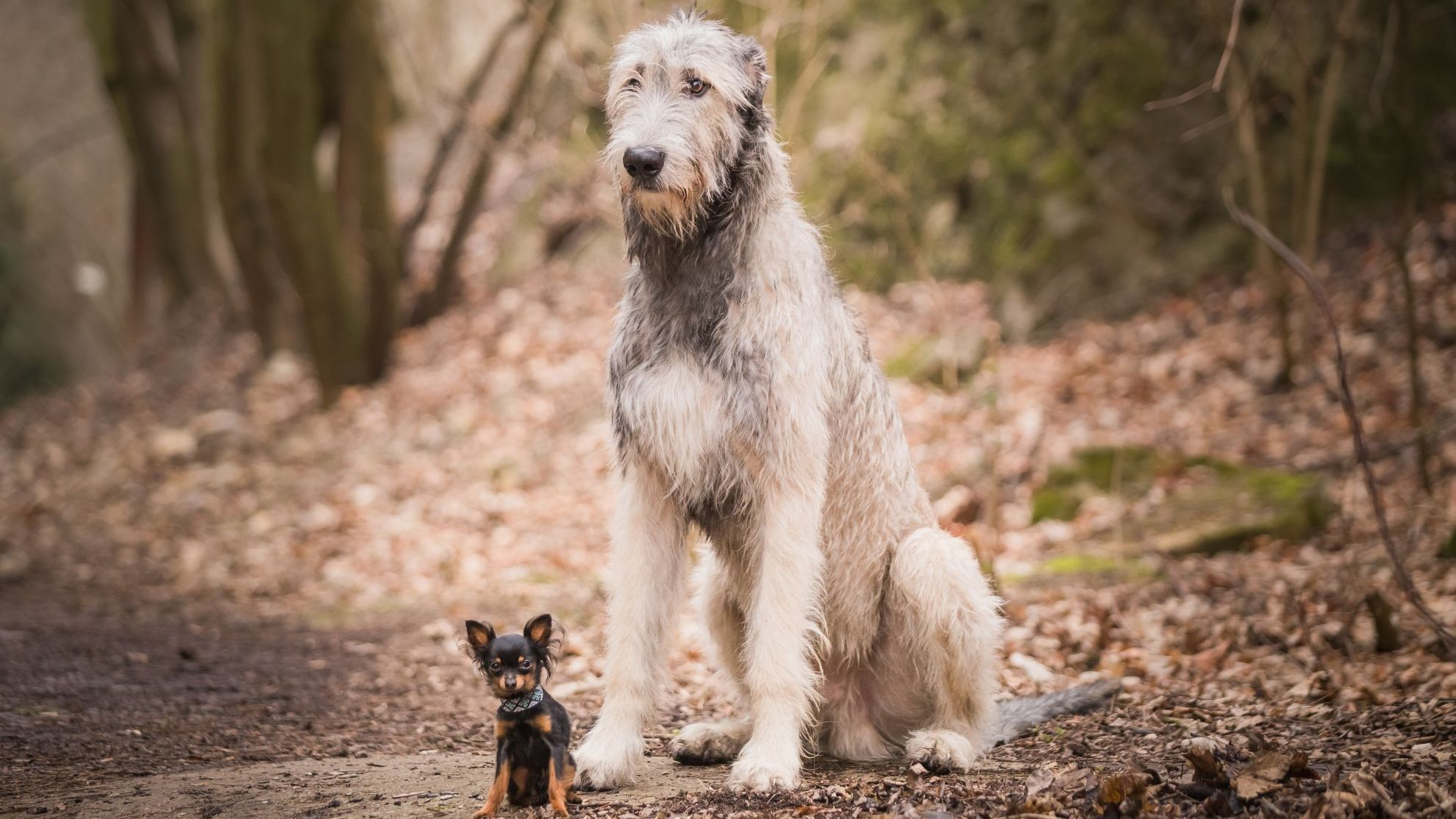Our guide to large-sized (and extra-large) dogs
When it comes to large dog breeds or extra-large dogs, their size can often give people preconceived ideas. Having said that, most large dog breeds have sweet, gentle temperaments, which makes them a popular choice for dog lovers. Typically you’ll find maxi or large dogs weighing between 26 and 44 kg (57 to 97 lbs), and extra-large or giant dogs weighing 45 kg (99 lbs) or more. Large and giant dogs are known for their strength, stamina and protective instincts. However, contrary to their reputations and often overbearing size, not all large dogs make good guard dogs. Each breed has unique qualities; some make the perfect guard dog while others work better as snuggle buddies.
If you’re considering getting a large or giant dog breed, you’ll want to understand the unique characteristics of larger dogs and the health considerations you need to keep in mind. You’ll also want to look at how you can look beyond the stereotypes of owning a large dog to find the right breed for you. And as always, remember that each dog is different and should be judged based on their own uniqueness.
Article

What are the different types of large dogs?
Overcoming the stereotypes of large breed dogs
Stereotyping of large dogs happens often. It comes from misconceptions perpetuated in media and people's limited experiences with said bigger breeds. In reality, each dog is unique and, as with any puppy, while genetics and breed play a part, training and environment influence behaviour enormously. You just need to remember that no matter the dog's size, you should always approach and treat them respectfully and with kindness.
Some common stereotypes associated with large and extra-large dog breeds include:

Ever wondered what the largest dog breed in the world is?
From the tallest to the heaviest, let's explore the most majestic of our four-legged friends according to the American Kennel Club.
- The Irish Wolfhound holds the title of the largest dog breed in the world based on height
- Known as a gentle giant, they stand tall, with males reaching heights of up to 81 cm (32 inches) at the shoulder
- Irish Wolfhounds have a long history, having been around since Ancient Rome, but don’t make the best guard dogs as they’re not suspicious of strangers
- Among the extra-large breeds are the Saint Bernard and the Great Dane, who are massive and affectionate companions
- Male Saint Bernards can reach heights of up to 76 cm (30 inches) or more at the shoulder
- Male Great Danes can reach a height of 81 cm (31 inches)
- The Boerboel is the largest dog breed by weight for both males and females
- Both male and female Boerboels can weigh between 68 to 90 kg (150-200 lbs) or even more
- Boerboels are known to be fierce protectors of their homes and families that are also very trainable
Explore our extensive giant dog breed library, here:
Why would you choose a large dog?
There are various reasons you’d choose to bring a big size dog into your home. There are some key factors that you might want to consider before doing so, including:
What health issues could come up with large dogs?
There are some health issues and concerns you need to be aware of if you’re looking at bringing one into your family. Each dog is unique, and this goes for their health concerns as well, but there are issues common amongst large dog breeds that any potential owner needs to be aware of. Regular veterinary check-ups and proper care, including treatment for arthritic dogs, can help manage these potential issues.
Many large dogs, like the German Shepherd, can be prone to hip dysplasia. This genetic condition is caused by a badly formed hip joint and leads to osteoarthritis. With symptoms ranging from stiffness to aversion to exercise, good weight management and joint supplements may help. Puppies from reputable breeders will be screened for these genetic issues to help prepare potential owners.
Deep-chested dog breeds, such as the Great Dane, are more susceptible to bloat, which is a sudden and life-threatening swelling of your dog’s stomach and, subsequently, the abdomen. Bloat is often triggered by eating too much too fast or exercising too close to mealtimes. You can help reduce the risk of this issue by feeding smaller meals and avoiding vigorous exercise soon after meals.
Along with hip dysplasia, the size and weight of large dogs can put extra stress on their joints which can lead to conditions like osteoarthritis. Maintaining a healthy weight and providing joint supplements can help alleviate discomfort.
This can be a significant concern for many large dog breeds, particularly breeds like Labradors and Golden Retrievers which are considered both medium and large dog breeds due to their size variations. Excess weight places strain on their joints, exacerbating other health conditions. Other health concerns also have a higher chance of occurring if your dog is carrying extra weight, including heart conditions. To prevent obesity, monitor your dog's diet, provide regular exercise, and consult with a veterinarian for a tailored nutrition plan. Regular check-ups should include discussions about weight and nutrition to ensure your dog's overall well-being.
What physical features might you find in large dog breeds?
Large-sized dogs boast an impressive range of differences in aesthetics or appearance, including coat types, colours and facial features. If, when looking into different large dog breeds, particular looks attract you more than others, then some factors below might play a role in your decision.
Popular large dog breeds
Dive into our comprehensive large dog breeds, here:
Related Articles
Like & share this page
